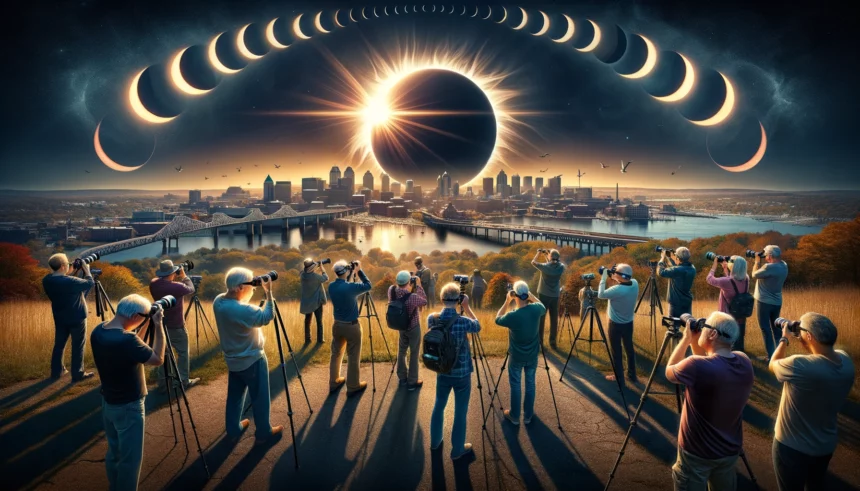New England is poised to witness an awe-inspiring celestial event next month on April 8th – a total solar eclipse, a phenomenon not expected to grace the lower 48 states again for another two decades. This event presents a unique opportunity for photography enthusiasts and casual observers alike to capture a moment that is truly once in a generation.
As excitement builds, experts are emphasizing the importance of preparation, especially when it comes to safely photographing the eclipse. The intense, unfiltered light of the sun, whether during an eclipse or not, poses a significant risk of permanent damage both to the human eye and to the delicate sensors of cameras and smartphones.
Douglas Duncan, an esteemed astronomer at the University of Colorado, likens the effect of the sun’s rays through a camera lens to using a magnifying glass to focus sunlight and start a fire. “Eventually, it would melt your camera, rendering it useless forever,” Duncan warns. This stark analogy underscores the necessity of equipping both eyes and cameras with proper protective filters.
Thankfully, the market has responded with innovations such as the Solar Snap, a filter designed by Duncan himself, retailing for around $17 on Amazon. Tailored for both Apple and Android phones, this filter affixes to the device via Velcro, covering the lens with a specialized material that blocks out harmful light. Verified by the American Astronomical Society, Solar Snap and similar products promise safety and effectiveness for eclipse photography.
Moreover, the Solar Snap is paired with an accompanying smartphone app, designed to streamline the photography process. It allows users to adjust camera settings and automate shooting, ensuring even novices can capture the eclipse’s beauty without fuss.
For those aiming to document the entire event, spanning roughly two and a half hours as the moon obscures the sun, investing in a tripod could prove invaluable. This will aid in maintaining stability and focus throughout the eclipse’s phases, including the mesmerizing moment of totality, when the sun’s corona becomes visible.
It’s during this brief period of totality, lasting just over four minutes, that observers can safely remove their protective glasses and filters to behold the sun’s outer atmosphere directly. Duncan advises readiness to quickly reapply protection as the sun reemerges, highlighting the fleeting nature of this safe viewing window.
Yet, capturing the grandeur of the eclipse on a smartphone does come with its challenges, notably the small size of the images produced by the phone’s lens. Duncan notes that while smartphones excel at capturing scenes and portraits, they falter with celestial photography. Solutions range from affordable snap-on telephoto lenses to innovative setups like astronomer Patricia Reiff’s method of attaching smartphones to binoculars for enhanced detail and scale.
As the anticipation for the solar eclipse grows, experts like Reiff and Duncan encourage enthusiasts to practice shooting the sun and moon in preparation. However, they also remind us of the value in experiencing the eclipse beyond the lens, suggesting capturing the ambiance and reactions around them as the world briefly dims.
This upcoming eclipse offers not just a spectacle in the sky but a moment of communal wonder and reflection. With the right preparations, it’s an event that can be safely immortalized through photography, bringing the awe of the cosmos right into our hands. Whether through the lens of a high-end camera, a smartphone, or the unaided eye, April 8th promises to be a day when the heavens touch the earth, leaving lasting memories and images in their wake.
















